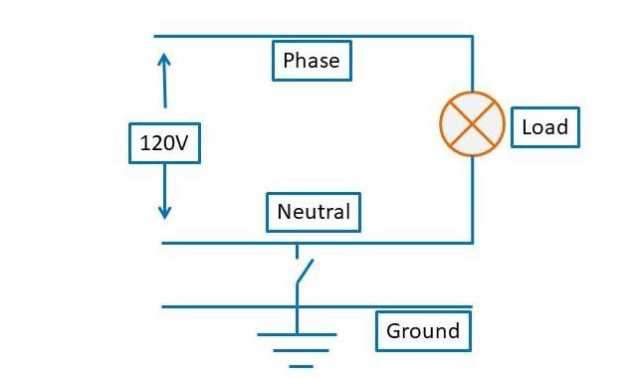The Valve Regulated Lead Acid (VRLA) Battery is a type of rechargeable lead-acid battery. It is a fully maintenance-free and complete sealed battery. They are also commonly known as Sealed Battery(SLA). Injection of water or electrolyte not required for this type of battery. Nowadays the VRLA batteries are common uses in various power backup systems and electrical appliances.

VRLA battery Working Principle:
Designs of the batteries are a little different from the general lead-acid battery because no valves are present in these batteries to eject O2 Gas. It is designed in a way that the negative plate will not fully charge even when positive plates are in full charge condition. Here, no H2 gas generates from the negative plates and O2 gas generates from the overcharged positive plates.
Step1: The generated O2 gas from the positive plates reacts with charge spongy leads(Pb) of negative plates and generate Lead Monoxide(PbO).
Pb + ½ O2 → PbO
Step-2: The generated Lead Monoxide again reacts with the Sulfuric Acid (H2SO4) in the electrolyte and generates Lead Sulphate (PbSO4).
PbO + H2SO4 → PbSO4 + H2O
Step-3: The generated Lead Sulphate (PbSO4) again reform and generates Sulfuric Acid and Lead(Pb).
PbSO4 + 2e- + 2H+ → H2SO4 + Pb
This process prevents to loss of water. In this way, O2 generates from the overcharged positive plates automatically absorbed by the negative plates and ejection of O2 not require. No initial charging is required for this battery.
Types:
Ther are two types of VRLA battery present.
- Absorbent Glass Mat (AGM)
- Gel cell
- Absorbent Glass Mat (AGM)
In this battery, a thin ultra-fine fiberglass mat placed between the plates of electrodes. The fiberglass mats easily absorb the electrolyte and do not affect by the electrolyte. This mat packs in between the plates and slightly compressed and fix at the place. These batteries are vibration-proof because of using of glass mat and tightly packing inside the battery.
It has low internal resistance and charging and discharging capacity is very fast. The service life of the battery is very long and it is very much safer to use. This battery uses in the vehicles, UPS and other power storage devices.
2. Gel Cell Battery:
In this battery, the electrolyte used in gel form. The sulfuric acid is mixed with fumed silica and which makes the resulting mass gel and immobile. Gel batteries are robust and versatile.
Gel cell batteries can make in small size and ratings which are used in various small electronics devices. These batteries are also used in emergency light, UPS system, storage of solar power and other home and office backup power system.
Maintenance:
However, the VRLA battery is called maintenance-free, following maintenance procedures follow for increasing the life of the battery.
- Cleaning and tightness of battery terminals
- Removing dust from the batteries and clean the battery box to avoid rusting.
- Maintain the Temperature of the battery room. It is very much sensitive to temperature. Always maintain the room temperature at 20-24 degrees centigrade as recommended by the manufacturer.
- During long storage, schedule charging and discharging of the battery is also important to increase the life of the battery.
- Including above also follow the manufacturer-specific guidelines or manual for maintenance.
VRLA Battery Charging Procedure.
Proper charging of the battery is important for the healthiness of the battery. Always charge the VRLA battery by the specific charger as per the voltage and current rating of the battery. Float mode (low charging current) and boost mode (High charging current) are available in the charger.
Procedures for charging of VRLA battery (cell voltage-2V) are below.
- Check the individual cell voltage and if the voltage is above 2V, select the charger in float mode.
- Set charging voltage at 2.25 V per cell, example, for 100 nos. of cells battery total charging voltage will be (100X2.25)=225V
- If the voltage falling below 2.2V, then select the charger in boost mode.
- Set charging voltage at 2.3V per cell, for example for 100 nos. of cells battery total charging voltage will be (100X2.3)=230V.
- Avoid overvoltage during charging. Charging voltage must not increase above 2.35V.
- Always follow the instruction manual for using the float and boost mode for charging of the battery.
Advantages of VRLA Battery:
- It is maintenance-free and no periodic water refilling requires
- Fast charging and discharging capacity
- The batteries have a long life. The life span of the battery is around 15 years.
- Heat and shock resistance
- Additional safety gear not require
- Easy operation at most temperature
- Capacity range is very high
- These are economical and easily available
Applications
- UPS system
- Security system
- Emergency light system
- Radio communication system
- Engine starting
- Portable test equipment
- Solar power backup
- Radio communication system
- Emergency power backup of an electrical substation.
- Portable lighting
VRLA vs lithium-ion battery
| VRLA Battery | Lithium Battery |
| High Power to weight ratio | Low power to weight ratio |
| The efficiency of discharge rate is high | The efficiency of discharge rate is low |
| Fast charging capacity | Low charging capacity |
| wide usable temperature range | Use only lower temperature around 20-24 degree celsius |
| High manufacturing cost | Low manufacturing cost |
| Life is about 4 to 5 years | Life is about 10-15 years |
| Very small size and rating are available | Compare to higher size and rating available |
